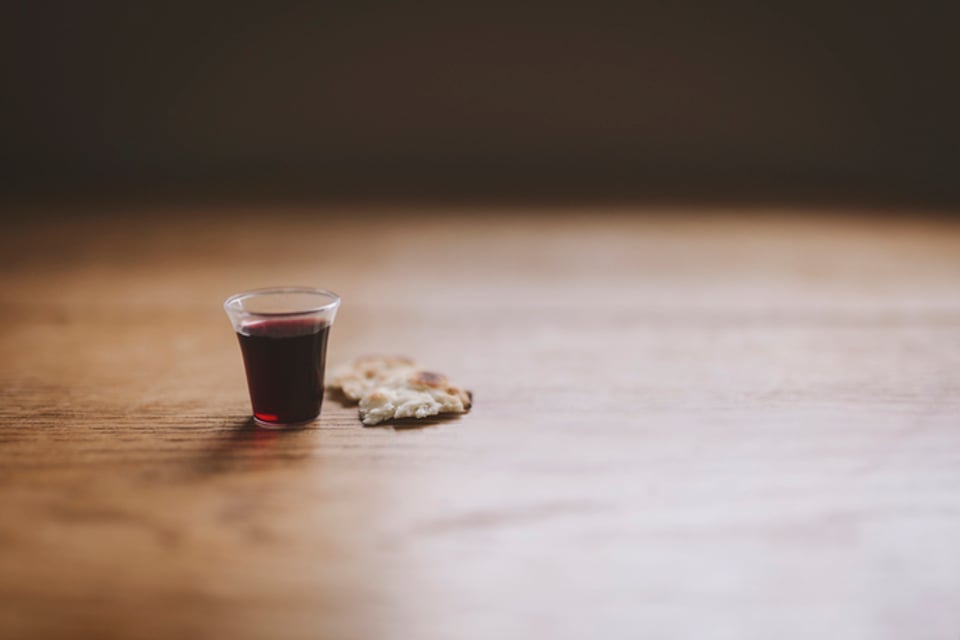“Do This in Remembrance of Me”: The Symbolism of the Bread and Wine
Written by Stephan M. Koenig
When Jesus Christ gave us the symbols of the New Testament Passover, why did He specifically say to remember Him, and why is it important?

As we prepare for Passover, it is a good time to look at one of the key teachings that has to do specifically with Jesus Christ. And that is the bread and the wine we partake of at the Passover service. When Jesus introduced them, He didn’t say much beyond what they were and how we were to consume them, except He gave specific, simple instructions as to what they were for.
“And He took bread, gave thanks and broke it, and gave it to them, saying, ‘This is My body which is given for you; do this in remembrance of Me’” (Luke 22:19).
Now interestingly, “In remembrance of Me” only appears in Luke’s account in the Gospels, but we also see it in Paul’s first epistle to the Corinthians.
In historical order, 1 Corinthians is believed to have been written before Luke’s Gospel. Paul included that instruction based on Jesus Christ’s personal instructions to him (1 Corinthians 11:23).
Passover in 1 Corinthians
In the 1 Corinthians account, Paul had the difficult task of addressing those who were abusing the symbols of the Passover to the point that people were eating and drinking in excess at this observance. So he had to reestablish the true procedure as Christ had shown him. The Corinthians were in danger of losing the very thing Christ told them to do!
“For I received from the Lord that which I also delivered to you: that the Lord Jesus on the same night in which He was betrayed took bread; and when He had given thanks, He broke it and said, ‘Take, eat; this is My body which is broken for you; do this in remembrance of Me.’ In the same manner He also took the cup after supper, saying, “This cup is the new covenant in My blood. This do, as often as you drink it, in remembrance of Me’” (1 Corinthians 11:23-25).
Paul’s instructions were from Christ Himself and were to set forward the proper meaning and symbolism for this holy observance.
Passover with Christ
Passover is not a holy day but a festival with a holy service, one that has high significance for believers in Christ.
The importance of who He was and why He died is commemorated on this special annual occasion.
We take the bread and wine of the New Testament Passover as symbols of Christ being in us and of His covenant with His people. We do it annually to remind us of Him and what He did for us and the world.
Old Testament precursors of the symbols
Why did Jesus Christ use these symbols? Studying bread and wine in the Bible shows they had been used previously in different ways.
Bread and wine are mentioned as far back as Genesis 14, when Abraham and Melchizedek used them to celebrate Abraham’s victory over the kings.
The temple showbread was symbolic of the 12 tribes of Israel and was to be consumed by only the priests (Leviticus 24:5-9). Grain offerings to God were unleavened (Leviticus 2:4-5, 11).
Drink offerings were given in the Old Testament era as well. The first recorded giving of a drink offering was Genesis 35:14, when Jacob’s name was changed to Israel. Drink offerings were part of many other offerings (Exodus 29:40-41; Leviticus 23:13, 18, 37; etc.).
The nature of the symbols
Though the bread and the wine have deep symbolism, they were basic food items, readily available and eaten in society.
Jesus Christ used these basic and common things that were already present at the Passover meal when He proclaimed their new meaning.
Unlike the showbread, which represented the 12 tribes, the bread of the Passover service represented Jesus’ body.
In Christ’s symbolism the bread and wine became significant and holy and a special part of bringing Him into our lives. They are symbols of His living in us, His New Covenant with us and His sacrifice for us.
The proper reverence of the symbols
An additional set of instructions was also given to us by Paul, who showed us that the symbols must be taken with a proper care and focus in our minds. This is found in 1 Corinthians 11:27-29:
“So then, whoever eats the bread or drinks the cup of the Lord in an unworthy manner will be guilty of sinning against the body and blood of the Lord. Everyone ought to examine themselves before they eat of the bread and drink from the cup. For those who eat and drink without discerning the body of Christ eat and drink judgment on themselves” (New International Version).
These are very important instructions to remember because they show we must know what we are doing and why we are doing it.
While literally they may just be bread and wine, mere staples of food consumed in ordinary life, they carry an important symbolism on this specific occasion. Paul emphasizes that we are to remember Jesus Christ and to have the proper mind-set of what these symbols represent, or we will be judged for not doing so.
In the Passover service these symbols become representations of His body and His blood, with the symbolism that He is in us and we are in Him. They also remind us that He died for us and paid the penalty for our sins that we deserved. He did this out of love for us and all of mankind. Our minds and hearts must discern this in order to take the Passover in a worthy manner.
Until His return, this observance and its symbols should remind us of all He represents and the future we have in Him forever.










